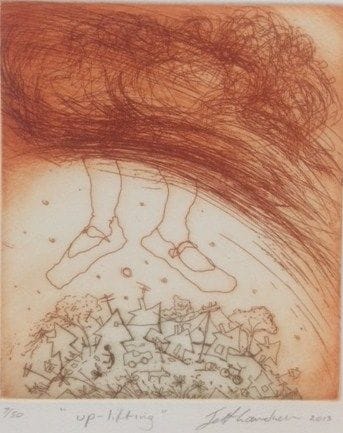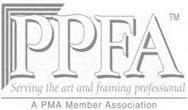LIMITED EDITION PRINTS
There are basically two broad types of prints:-
1. ORIGINAL fine art prints, which are prepared as an original work on a master plate to be individually inked, printed by hand, numbered and signed by the artist in a finite edition.
There are many different techniques available for the artist to employ depending on the effect the artist wishes to achieve.
All of these varying techniques come under the general term "PRINTMAKING", which is an important branch of the FINE ARTS
2. REPRODUCTIVE prints, are mechanically or digitally produced copies of art-works in another medium which are then numbered and often signed by the artist. Much larger editions are usual with this type of print because there is no master plate involved which wears down after each successive "pull" from the press.
In this article, we will briefly discuss ORIGINAL printmaking.
TECHNIQUES
INTAGLIO PRINTING (from the Latin word "intagliare", to incise.)
Either acid or a sharp tool is used to incise the image onto a metal plate (traditionally copper). The plate is then inked and then wiped so that only the incised areas contain ink. The paper is then placed under pressure in the press, and the inked areas leave the image impressed onto the paper.
A tell-tale plate-mark is visible where the edges of the plate have left a ridge in the pressing process. This is a useful identifier that the piece is an original etching.
Different types of intaglio printing techniques are:-
Etching, Aquatint and Photogravure made using acid to corrode areas of the plate.
Engraving, drypoint, and mezzotint made using a sharp tool to incise the surface of the plate.
Often, more than one technique is used in a single work, and the techniques chosen for use by the artist is dependent upon the effect the artist wishes to achieve.
For instance, AQUATINT is used when the artist is chiefly concerned with COLOUR (See "The Brolga" below by Frank Hodgkinson),

And DRY-POINT is used when the artist is chiefly concerned with LINE. (see "Uplifting" by Jeff Gardner.)

RELIEF PRINTING
The artist first sketches the image onto a hard, flat surface. Then, the areas that are not to receive ink are carved away, leaving the image raised up from the background. The block is then inked up with a roller and pressed onto the paper
Different types of relief printing are wood-cuts, wood-engraving and lino-cut.
Relief prints are distinctive in that the effect is of bold, dark and light contrasts.
(see "Inside in the summer" by Anita Klein)

PLANOGRAPHY
Planography is the printing of a flat surface. There is no cutting or incising of the plate using this technique. For example:-
LITHOGRAPHY is where a design is applied to a flat stone (traditionally limestone) with a greasy material like crayon for instance, then water and printing ink are applied. The greasy parts absorb the ink and the wet parts do not.
SERIGRAPHY or SCREEN-PRINTING
A stencil is fastened to a sheet of silk on a screen which is stretched onto a wooden frame. Then, a squeegee is used to force the ink through the silk and onto the paper below.
A separate stencil is used for each successive colour application which produces an image with a unique and rich appearance due to the layering of the pigments onto the paper surface. (See "Flowering Gum" by Greg Irvine)
So, you can see that Print-making is a valuable skill for artists to utilise in the interpretation of their individual creative visions and a little understanding on the part of the viewer allows us to fully appreciate their artistic endeavours.








